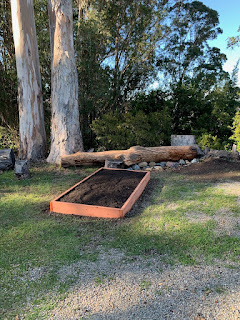Hello RHS SustAg Community!
The SustAg Blog has been diminished a bit this year. Instead of weekly posts, there will only be periodic check-ins. Instead of required weekly blogs, students will instead have choice regarding their community outreach. Sometimes, students may choose to blog, but no promises. Honestly, the blog hasn’t been a huge hit. If you are looking for current information about the farm or the course, I suppose my website is probably the best bet.
That said, students are working at the farm after school in Covid-safe pods, with facemarks, and at 6’ distance. We wear gloves and sanitize our tools. We have been able to get a lot done, prepping and planting about 40 beds in September, with hopes of selling at the SR Civic Center Farmer’s Market on a Sunday in October or November.
Here are some pictures of what we have been doing. Be well.
Mr. Stewart
Weeding and prep:

Beds prepped!

Planted!










